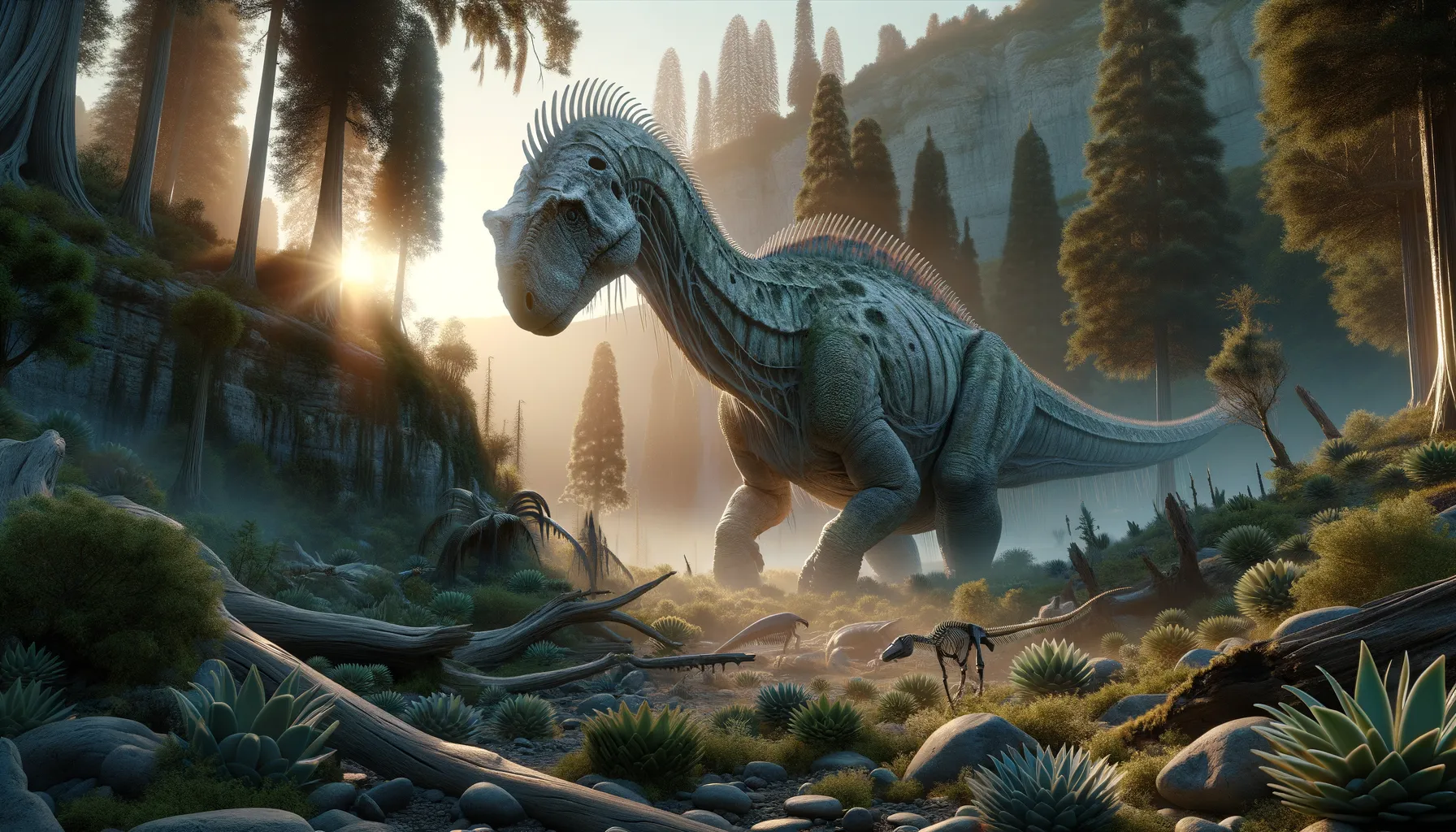
Campylodon
Mysterious giant of the ancient past.
Period
Cretaceous
Length
Unknown due to lack of specific data.
Height
Unknown due to lack of specific data.
Weight
Unknown due to lack of specific data.
Campylodon is largely considered a dubious name in paleontology, given the scant evidence supporting its distinct classification. The name hints at a dinosaur described in the early fossil discovery era, but it lacks distinct fossil remains that could validate what kind of dinosaur it truly was or how it lived. It stands as an example of the challenges faced in taxonomy during pioneering stages of paleontology.
Diet
Details about its diet remain speculative due to lack of fossil evidence. Based on general characteristics of potential related species, it could have been herbivorous or omnivorous.
Hunting
Hunting behaviors cannot be definitively described without further fossil evidence. If similar to known herbivores, it may have grazed on plants rather than active hunting.
Environmental challenges
Without substantial records, specific environmental challenges Campylodon might have faced are unknown. General challenges of dinosaurs in its assumed era include competition for resources and surviving fluctuating climates. Predators and natural disasters were also likely constant threats.
Speed
Unknown due to lack of specific data.
Lifespan
Unknown due to lack of specific data.
First discovery
Campylodon, often a misnomer, lacks comprehensive data.
Fun Facts
- Campylodon was a dinosaur that lived during the Late Cretaceous period, around 70 to 100 million years ago.
- This dinosaur is known primarily from teeth fossils, which suggests it might have been similar to other herbivorous dinosaurs like Iguanodon.
- The name 'Campylodon' means 'curved tooth', referring to its distinctive tooth shape.
- Campylodon is thought to have been a herbivore, feeding on plants that were abundant during its time.
- Though not much is known about Campylodon due to limited fossils, it sparks curiosity about its lifestyle and environment.
- Campylodon's teeth help scientists understand more about the diet and eating habits of dinosaurs from the same era.
- Fossils of Campylodon have been found in regions that were part of ancient Europe, painting a picture of a lush, green habitat.
Growth and Development
No specific growth and development data exist for Campylodon. Insights from related dinosaurs suggest a typical dinosaur growth pattern, involving rapid early growth and slower maturation. Juveniles might have been more vulnerable to predation and environmental factors.
Habitat
Little is known about the specific habitat of Campylodon. Assuming it lived during the Cretaceous period, it could have inhabited a range of environments like forests, plains, or near water bodies. Its precise adaptations to these environments remain unclear without further discoveries.
Interaction with other species
Interactions with other species are not documented for Campylodon. Based on assumptions from the era, it might have shared its environment with various herbivores and predators. Symbiotic or competitive interactions would depend heavily on its true classification.
Natural lifespan
Due to a lack of evidence, Campylodon's natural lifespan remains unknown.
Reproduction
Reproductive habits of Campylodon are undetermined. If it were like other known dinosaurs, it might have laid eggs and exhibited nesting behavior. Parental care levels are speculative.
Social behaviour
Social behavior remains unclassified for Campylodon. If it were social, it might have moved in herds, similar to some herbivorous dinosaurs. Without concrete fossil evidence, such behaviors are purely speculative.
Fossil locations
No confirmed fossil finds are attributed to Campylodon with certainty. It is largely considered a nomen dubium, and any claimed fossils have not provided significant insights into its existence or nature.
